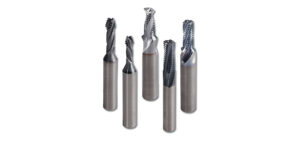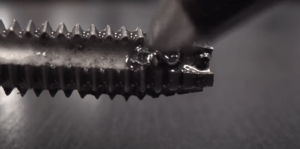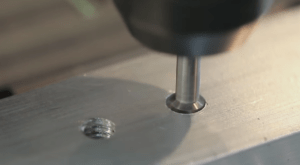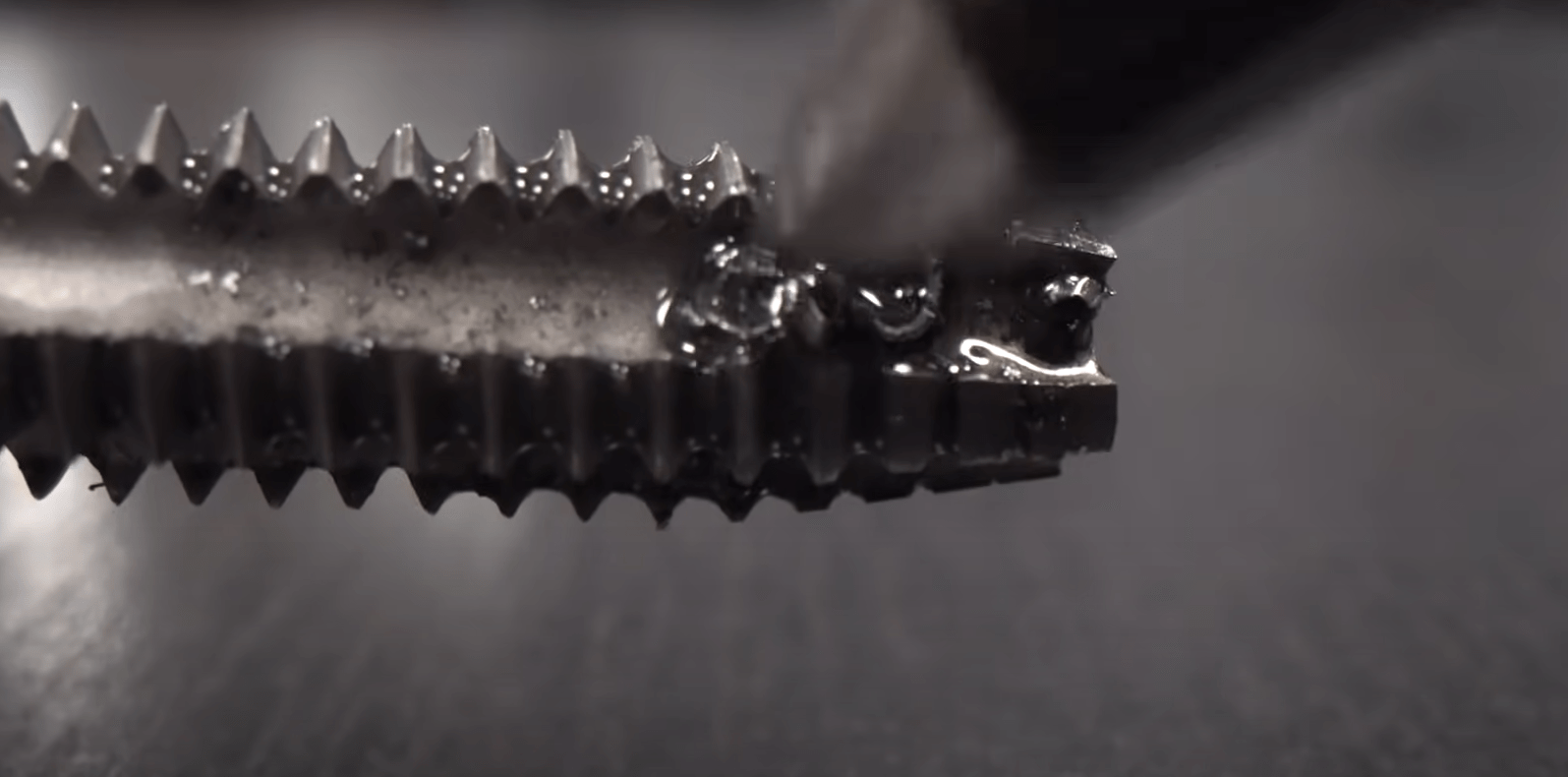We will focus on the two main approaches for creating internal screw threads: tapping and thread milling, and discuss when to choose one method over the other. We won’t delve into other threading techniques like thread rolling, chasing, or whirling, as they are primarily used for external fasteners, namely screws. Additionally, we won’t cover single-point threading, which is an alternative to thread milling and is commonly performed on appropriately equipped lathes to produce both internal and external threads.

Threader tool for historical
Since the advent of electricity, we have been using pumps to transport fluids, which would not be possible, or at least be very difficult and expensive to be done without threaded fasteners. The same applies to bicycles, computers, refrigerators, and almost all other modern electromechanical equipment. Thread mills connect the world together. The complex subject includes tolerance classes, Coarse and fine, left or right,angle, and pitch about threading.
What is Tapping?

A tap bears a resemblance to a bolt or screw, featuring grooves along its sides. These grooves serve the purpose of effectively channeling chips out of the hole during the machining process, while the sharp edges on the end and periphery of the tap cut the threads. Taps operate in a manner similar to other rotary tools: they are securely held in a chuck, collet, or specialized “floating” toolholder and then driven into the workpiece at a specific feedrate.
However, there are two important considerations to keep in mind. Firstly, the hole must be slightly larger than the tap’s minor diameter. It is crucial to note that taps are not designed to function like drill bits, as they solely cut on the outer edges of the tool. Secondly, the feedrate must precisely align with the thread’s pitch. For instance, a 1/4″-20 tap necessitates an advancement of 0.05″ per revolution (equating to 20 threads per inch) in order to create a well-formed thread.
Much like the diverse array of thread types available, a wide variety of taps also exists. Plug taps are commonly employed to thread “through-holes,” whereas bottom taps, as the name implies, are capable of producing threads that extend nearly to the very bottom of blind holes. Spiral point taps are known for their propensity to drive chips forward, while taps with spiral flutes direct the chips upwards and out of the hole.
Another category of taps is the forming or roll taps, which differ in their chip production. These taps displace material, similar to the thread-rolling process mentioned in the introduction. Form taps adhere to the same fundamental principles as cut taps concerning feedrate and tool geometry, but they require a slightly larger pilot hole to accommodate the displaced metal. It is important to note that form taps are limited to ductile materials such as aluminum, stainless steel, and superalloys, and should not be used with cast iron or hardened steels.
What is Thread Milling?

A thread mill also requires a pre-drilled hole. Unlike cut and form taps, however, it offers greater flexibility in terms of feedrates, thread size, and programming approach. Functioning as a milling cutter, it removes material radially along its peripheral edges. The distinguishing feature is that a thread mill’s flutes mirror the thread form itself, generating it as they move.
It is important to note that the term “programming approach” is relevant here. Unlike tapping, which can be performed on various machine tools or even manually, thread milling is only feasible on CNC machining centers, mill-turn centers equipped with the Y-axis, or multitasking lathes. Nevertheless, it provides programmers with significant freedom in their machining approach, the range of materials they can work with, and even the size of the threaded hole. For instance, a single 20-pitch thread mill can produce threads of any size as long as it has 20 threads per inch and does not exceed the tool’s maximum cutting depth.
A thread milling operation begins by driving the cutter down the center of a drilled hole at a relatively fast rate, followed by a small arcing motion to move the tool radially into the workpiece until the desired diameter is achieved. The rotating thread mill then completes one full circle while simultaneously moving upward (in the Z-axis) by an amount equal to the thread pitch. In the case of our 1/4″-20 example, this would be 0.050″, equivalent to one complete turn. Once the thread is formed, the tool disengages by executing another small arcing motion back to its starting point before retracting from the hole.
The aforementioned description provides a general overview of the programming process. In cases where the material is tough, such as Inconel or titanium, multiple passes or “spring passes” may be necessary. Different arcing strategies can be employed, and since the feedrate is not dependent on the thread pitch as in tapping, programmers have the freedom to adjust their strategies based on machining conditions and the type of tool being used. The example given earlier described a typical path of a “full profile” thread mill. However, some manufacturers offer “single-plane” thread mills, which must trace the entire thread from top to bottom, circling repeatedly until reaching the desired depth.
Which is the best to choose?
When comparing tapping and thread milling, several factors come into play: machining speed, size range, durability, and flexibility.
- In terms of machining speed, tapping generally has the advantage. It is a relatively quick process, especially when working with softer materials. Tapping allows for rapid creation of threads, making it suitable for high-volume production scenarios.
- When it comes to size range, thread milling offers greater versatility. With a single thread mill, various thread sizes can be achieved simply by adjusting the programming parameters. This flexibility is particularly advantageous when dealing with custom or non-standard thread sizes.
- In terms of durability, both tapping and thread milling can produce robust threads. However, tapping may have a slight edge in certain cases due to the compression and deformation of material during the process, resulting in a stronger thread.
- Regarding flexibility, thread milling takes the lead. It offers more options in terms of tool selection, machining strategies, and the ability to work with a wider range of materials. Thread milling also allows for multi-axis machining, making it suitable for complex geometries and challenging workpieces.
Creating threads in metalworking, tapping and thread milling are two popular methods. Each approach has its advantages and limitations, making the choice between them crucial for achieving the desired outcome. In this discussion, we will explore the factors of machining speed, size range, durability, and flexibility to determine which method is best suited for specific applications.
Machining Speed: Tapping: Tapping is generally considered faster than thread milling, especially for smaller threads. The process involves fewer tool movements and requires less setup time, making it efficient for high-volume production. Thread Milling: Thread milling may be slower in comparison but offers increased flexibility for various thread sizes and complex geometries. It is preferred for lower volume productions and applications requiring unique thread designs.
- Size Range: Tapping: Tapping is well-suited for smaller thread sizes, typically ranging from around M1 to M36. Beyond this range, the process becomes more challenging due to the risk of tap breakage and increased difficulty in chip evacuation. Thread Milling: Thread milling excels in handling a broader size range, from very small threads to much larger ones. The process is more adaptable, allowing for customization and precision in thread profiles.
- Durability: Tapping: While tapping is fast and efficient, it may compromise the durability of the threads. Taps are prone to wear and breakage, particularly when working with tough materials or excessive depths. Thread Milling: Thread milling is generally more durable, especially when using solid carbide thread mills. The cutting forces are distributed over multiple teeth, reducing the wear on individual cutting edges and ensuring longer tool life.
- Flexibility: Tapping: Tapping is relatively limited in terms of thread design flexibility. Standard taps produce basic thread profiles, limiting customization options. Thread Milling: Thread milling offers exceptional flexibility and versatility in thread design. It allows for various thread forms, pitches, and helix angles, making it ideal for specialized applications and custom thread requirements.
The choice between tapping and thread milling depends on the specific needs of the project. If high machining speed and mass production of smaller threads are essential, tapping is the preferred option. However, for a broader size range, increased durability, and greater thread design flexibility, thread milling stands out as the better choice.
In many cases, a combination of both methods might be employed, leveraging the advantages of each technique based on the requirements of the individual components. Ultimately, understanding the characteristics and capabilities of both tapping and thread milling enables manufacturers to make informed decisions and optimize their metalworking processes for maximum efficiency and quality.
The choice between tapping and thread milling depends on specific requirements and factors such as production volume, thread size, material, and desired flexibility. Tapping excels in speed and is well-suited for high-volume production, while thread milling offers greater versatility, especially for custom sizes and complex applications. Both techniques have their merits and should be evaluated based on the specific machining needs.


